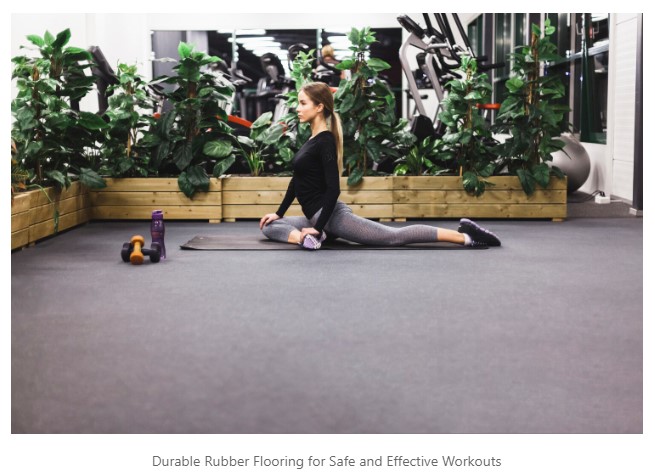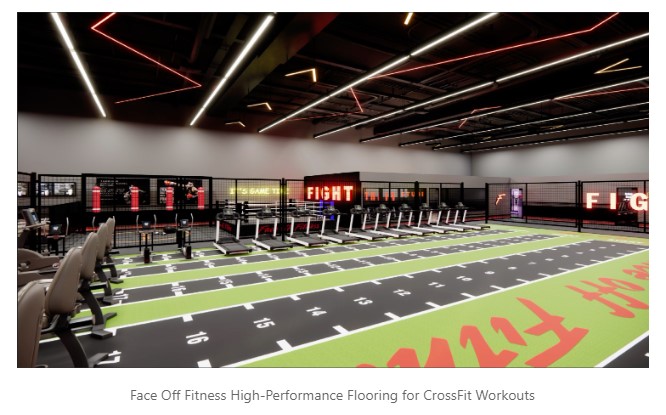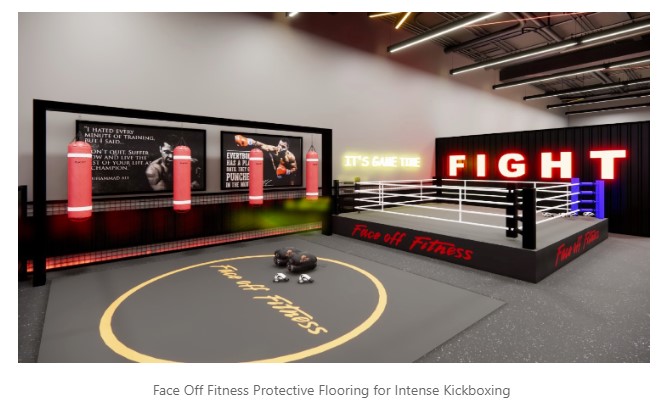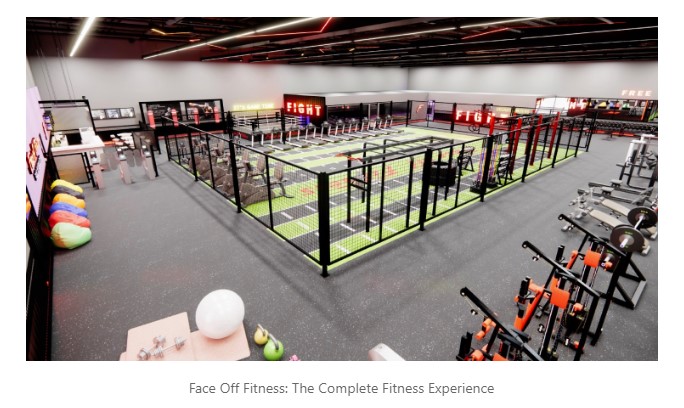
The Best Flooring for Workout Areas
Designing a workout area that is both functional and safe begins with selecting the appropriate flooring. The type of flooring chosen for a workout space significantly influences performance, safety, and durability. An ideal floor can help prevent injuries, provide necessary support for different types of exercises, and enhance the overall workout experience.
Whether you are setting up a home gym, equipping a commercial fitness center, or planning a specialized training area, choosing the right flooring option is crucial. Each flooring material offers distinct benefits and is suitable for specific workout routines, from high-impact exercises like weightlifting to low-impact activities such as yoga and Pilates.
By understanding the best flooring solutions available, you can create a workout space that caters to your needs while ensuring comfort and longevity.
Key Considerations When Choosing Workout Flooring
Before selecting the ideal flooring, consider the following factors:
- Shock Absorption: Reduces impact on joints and minimizes equipment damage.
- Durability: Withstands heavy usage, weights, and high foot traffic.
- Slip Resistance: Prevents injuries due to slipping.
- Maintenance: Easy to clean and resistant to moisture, sweat, and bacteria.
- Noise Reduction: Helps dampen sound, especially in apartment settings or commercial gyms.
- Installation and Cost: Should align with your budget and ease of setup.
1. Rubber Flooring
Rubber flooring is a popular choice for workout areas due to its durability and shock absorption properties. It’s ideal for areas with heavy equipment and high foot traffic, providing excellent cushioning to reduce impact on joints and minimize fatigue. Rubber flooring offers a non-slip surface, even when wet, ensuring safety during workouts. It’s also easy to clean and maintain, resistant to sweat and moisture. However, rubber flooring can be more expensive compared to other options and may have a strong rubbery smell when new.
Best For:
- Commercial Gyms: Ideal for areas with heavy machinery and high foot traffic due to its durability and shock absorption properties.
- Weightlifting Zones: Perfect for free weight areas and Olympic lifting platforms, as it reduces impact and protects the floor.
- High-Intensity Interval Training (HIIT): Provides excellent traction and cushioning for dynamic movements.
- Home Gyms: Versatile and easy to install, making it a great choice for personal workout spaces.

2. Epoxy Flooring
Epoxy flooring is known for its strength and durability, making it suitable for heavy lifting areas. It is resistant to oils, chemicals, and other spills, providing a seamless, easy-to-clean surface. Epoxy flooring can be customized with different colors and textures, offering both functionality and aesthetics. While it requires a higher initial investment and professional installation, its longevity and performance make it a worthwhile choice.
Best For:
- Heavy Lifting Areas: Suitable for areas with heavy machinery and intense weightlifting, such as powerlifting platforms.
- Industrial and Commercial Settings: Ideal for fitness facilities in commercial spaces where chemical resistance and easy maintenance are essential.
- Functional Training Spaces: Provides a smooth, durable surface for various functional training exercises.
3. Concrete Flooring
Concrete flooring is extremely strong and can handle heavy equipment and foot traffic. It can be polished or coated for additional durability and aesthetics, offering a cost-effective solution for workout areas. Concrete flooring is easy to clean and maintain, but its hard surface can be uncomfortable for prolonged standing and may develop cracks over time without proper sealing.
Best For:
- Garage Gyms: Commonly used in home garage gyms due to its strength and cost-effectiveness.
- Functional Training Areas: Can be used in functional training zones where heavy equipment is used, provided it’s coated or polished for added safety.
- CrossFit Boxes: Often used in CrossFit gyms for its durability and ability to handle heavy weights and equipment.

4. Vinyl Flooring
Vinyl flooring is resistant to wear and tear, making it suitable for high-traffic areas. It can handle spills and moisture, providing a cost-effective option for workout spaces. Vinyl flooring is generally more affordable than other flooring options and offers a softer surface compared to concrete. However, it can be slippery when wet and may be sensitive to certain chemicals.
Best For:
- Cardio Zones: Suitable for areas with cardio equipment like treadmills, ellipticals, and stationary bikes, offering a softer surface than concrete.
- Yoga and Pilates Studios: Provides a comfortable surface for low-impact activities and is easy to clean.
- Home Gyms: A cost-effective option for personal workout spaces with moderate activity levels.
5. Carpet Tiles
Carpet tiles provide a softer surface, which can be more comfortable for standing and help to absorb sound, reducing noise levels. Individual tiles can be replaced if damaged, making maintenance easier. While carpet tiles offer comfort, they are less durable compared to other flooring options and can be harder to clean and maintain, especially in areas with heavy dirt and debris.
Best For:
- Stretching and Recovery Areas: Offers a comfortable surface for stretching, yoga, and recovery exercises.
- Office Gyms: Suitable for corporate fitness rooms where the ambiance and noise reduction are important.
- Light Exercise Zones: Ideal for areas where light exercises, such as bodyweight training and low-impact activities, are performed.

Conclusion
Choosing the right flooring for your workout area involves considering factors such as the type of equipment used, foot traffic, and the need for chemical resistance. Rubber flooring and epoxy flooring stand out for their durability and safety features, making them ideal for heavy lifting and high-intensity areas. Concrete and vinyl flooring provide cost-effective solutions with good durability, suitable for various workout settings. Carpet tiles offer comfort and easy maintenance, perfect for stretching and recovery areas.
By understanding the benefits and drawbacks of each flooring type, you can make an informed decision that best suits your workout needs, ensuring a safe and effective exercise environment. Investing in the right flooring not only enhances performance and safety but also contributes to the overall aesthetics and functionality of your workout space.

FAQ
Q: What are the benefits of Rubber Flooring for workout areas?
A: Rubber flooring is highly durable, offers excellent shock absorption, and provides a non-slip surface. It’s easy to maintain, resistant to sweat and moisture, and available in various styles and thicknesses. It’s ideal for high-impact workouts, weightlifting, and commercial gyms.
Q: Is Epoxy Flooring suitable for home gyms?
A: Epoxy flooring is extremely durable and resistant to chemicals and spills, making it suitable for heavy lifting and commercial settings. While it’s a great option for home gyms, it requires professional installation and may have a higher initial cost compared to other flooring options.
Q: Can Concrete Flooring be used in workout areas?
A: Yes, concrete flooring is strong and cost-effective, making it a viable option for workout areas, especially in garage gyms and functional training spaces. However, it can be hard on joints and may need additional coatings or mats to enhance comfort and safety.
Q: How do I maintain and clean workout flooring?
A: Regular maintenance and cleaning are essential to prolong the lifespan of your workout flooring:
- Rubber Flooring: Sweep or vacuum regularly and mop with a mild detergent.
- Epoxy Flooring: Sweep and mop with a gentle cleaner to prevent build-up of dirt and grime.
- Concrete Flooring: Sweep or vacuum and occasionally mop with water and a gentle cleaner. Regularly seal the surface to prevent cracking.
- Vinyl Flooring: Sweep or vacuum and mop with a vinyl-specific cleaner to prevent dirt build-up and stains.
- Carpet Tiles: Vacuum regularly and spot clean with a carpet cleaner as needed.
Q: Can I install workout flooring myself?
A: Some types of workout flooring, like rubber tiles and vinyl planks, can be installed as DIY projects. However, options like epoxy flooring typically require professional installation to ensure proper application and durability.
